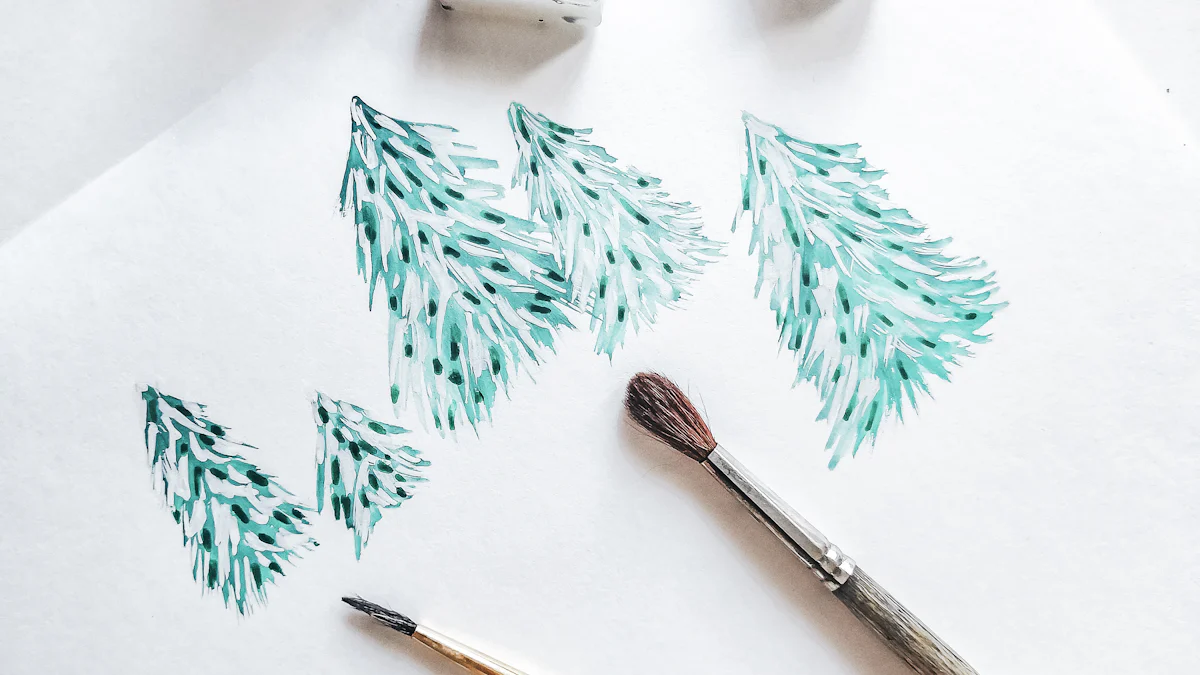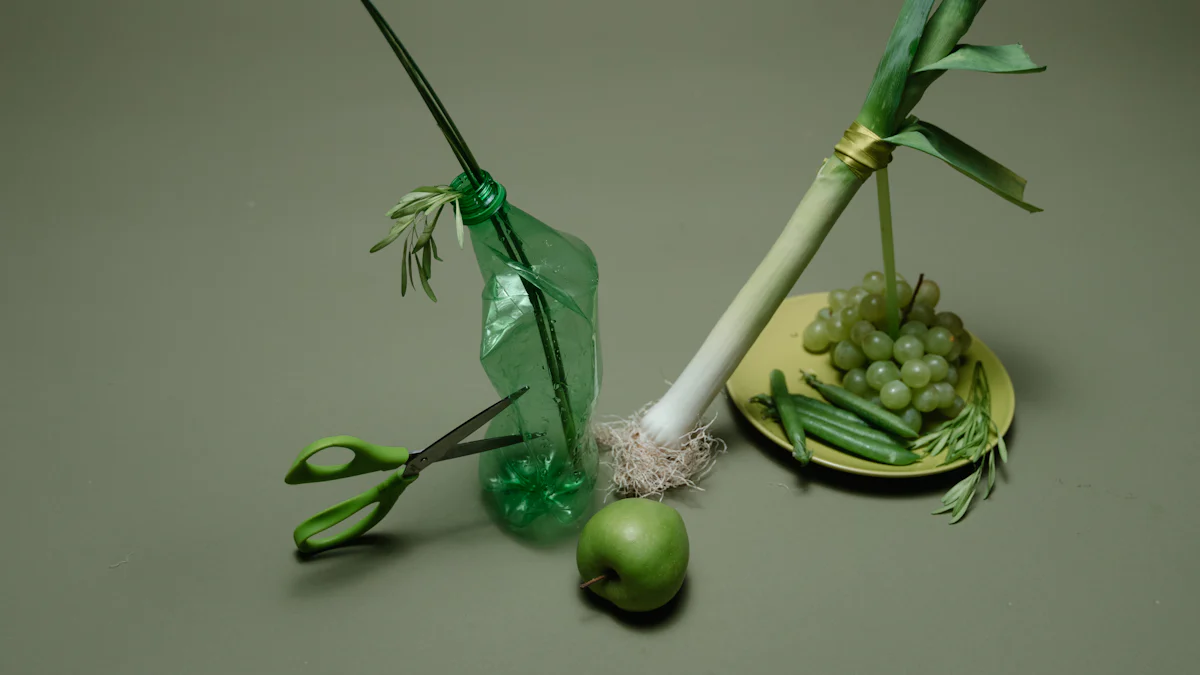
Dealing with a leaking PVC ball valve can be frustrating, right? Water dripping everywhere, wasted resources, and the risk of further damage—it’s a headache you don’t need. But don’t worry! This guide on how to repair PVC ball valve leakage will help you fix the issue quickly and get things back to normal.
Key Takeaways
- Look for leaks by spotting water, low pressure, or odd sounds.
- Gently tighten loose parts and change old seals to fix leaks.
- Check your PVC ball valve often to find problems early and make it last longer.
Signs of a Leaking PVC Ball Valve

Visible water dripping or pooling
One of the easiest ways to spot a leaking PVC ball valve is by noticing water where it shouldn’t be. Do you see water dripping from the valve or pooling around it? That’s a clear sign something’s wrong. Even small drips can add up over time, wasting water and increasing your bill. Don’t ignore it! A quick inspection can save you from bigger problems later.
Tip: Place a dry cloth or paper towel under the valve. If it gets wet, you’ve confirmed the leak.
Reduced water pressure in the system
Have you noticed weaker water flow from your faucets or sprinklers? A leaking valve might be the culprit. When water escapes through a leak, less of it reaches the rest of your system. This drop in pressure can make everyday tasks like watering your garden or washing dishes frustrating. Keep an eye on your water pressure—it’s often a clue something’s not working as it should.
Unusual noises or vibrations near the valve
Does the area around your valve make strange noises? Maybe you hear hissing, gurgling, or even feel vibrations. These signs often point to a leak or a problem with the valve’s seal. It’s like your plumbing system is trying to tell you something’s wrong. Pay attention to these sounds—they’re easy to miss but can help you catch a leak early.
Note: If you hear noises, act quickly. Ignoring them could lead to more damage.
Common Causes of PVC Ball Valve Leaks
Loose or damaged fittings
Loose or damaged fittings are one of the most common reasons for leaks. Over time, fittings can loosen due to vibrations or regular use. When this happens, water starts escaping through the gaps. Damaged fittings, on the other hand, might occur from wear and tear or accidental impacts. You should always check the fittings first when dealing with leaks. Tightening them or replacing broken ones can often solve the problem.
Tip: Use a wrench to gently tighten fittings. Avoid over-tightening, as it can cause cracks.
Cracks in the PVC material
PVC is durable, but it’s not indestructible. Cracks can form due to aging, exposure to extreme temperatures, or physical damage. Even a small crack can lead to significant leaks. If you spot a crack, repairing it might not always work. In such cases, replacing the valve is the best option.
Note: Protect your PVC valves from freezing temperatures to prevent cracks.
Worn-out or misaligned seals
Seals and O-rings play a crucial role in keeping your valve leak-free. Over time, these components can wear out or shift out of place. When this happens, water can seep through. Replacing worn-out seals is a straightforward fix. Make sure the new seals are properly aligned to avoid future leaks.
Improper installation or over-tightening
Improper installation is another common cause of leaks. If the valve wasn’t installed correctly, it might not create a proper seal. Over-tightening during installation can also damage the threads or the valve itself. Always follow the manufacturer’s instructions when installing a PVC ball valve. Proper installation ensures a longer lifespan and fewer issues.
Reminder: If you’re unsure about installation, consult a professional to avoid costly mistakes.
By understanding these common causes, you’ll know exactly where to start when troubleshooting leaks. This knowledge will also help you follow the steps in this guide on how to repair PVC ball valve leakage effectively.
How to Repair PVC Ball Valve Leakage

Turn off the water supply
Before you do anything, shut off the water supply. This step prevents water from gushing out while you work. Look for the main shut-off valve in your system and turn it clockwise until it stops. If you’re unsure where it is, check near your water meter or where the main line enters your home. Once the water is off, open a nearby faucet to release any remaining pressure.
Tip: Keep a bucket or towel handy to catch any leftover water when you start working on the valve.
Inspect the valve and surrounding area
Take a close look at the valve and the pipes around it. Check for visible cracks, loose fittings, or worn-out seals. Sometimes, the problem isn’t with the valve itself but with the connections or nearby components. Identifying the exact issue will save you time and effort during the repair process.
Tighten loose fittings
If you notice any loose fittings, grab a wrench and tighten them gently. Don’t overdo it, though. Over-tightening can damage the threads or even crack the PVC. A snug fit is all you need to stop water from leaking through the gaps.
Replace damaged seals or O-rings
Worn-out seals or O-rings are a common cause of leaks. Remove the valve handle to access these components. If they look cracked, flattened, or misaligned, replace them with new ones. Make sure the replacements match the size and type of your valve.
Note: Keep spare seals or O-rings in your toolbox. They’re inexpensive and can save you a trip to the store.
Apply plumber’s tape to threaded connections
For threaded connections, wrap plumber’s tape (also called Teflon tape) around the threads before reassembling. This tape creates a watertight seal and helps prevent future leaks. Wrap it clockwise to match the direction of the threads, and use two to three layers for the best results.
Test the valve for leaks after repairs
Once you’ve made the repairs, turn the water supply back on slowly. Check the valve and surrounding area for any signs of dripping or pooling water. If everything looks good, you’ve successfully fixed the leak! If not, double-check your work or consider replacing the valve entirely.
Reminder: Testing is crucial. Don’t skip this step, even if you’re confident in your repairs.
By following these steps, you’ll know exactly how to repair PVC ball valve leakage and restore your plumbing system to working order.
When to Replace the Valve Instead of Repairing
Sometimes, repairing a PVC ball valve just isn’t worth the effort. Here’s when you should consider replacing it instead.
Extensive cracks or damage to the valve body
If the valve body has large cracks or visible damage, it’s time for a replacement. Cracks weaken the structure and can lead to major leaks. Even if you patch them, the fix won’t last long. A damaged valve body is like a ticking time bomb—it’s better to replace it before it causes bigger problems.
Tip: Check the valve body closely under good lighting. Hairline cracks can be easy to miss but can still cause leaks.
Repeated leaks despite multiple repairs
Have you fixed the valve more than once, only for it to start leaking again? That’s a sign the valve has reached the end of its life. Constant repairs can be frustrating and costly. Instead of wasting time and money, replace the valve with a new one. It’ll save you from future headaches.
Reminder: A new valve is often more cost-effective than repeated repairs over time.
Difficulty finding replacement parts
If you can’t find the right seals, O-rings, or other parts for your valve, replacing it is the best option. Older or uncommon models can be tricky to repair because parts may no longer be available. A new valve ensures you have access to compatible components if you ever need them.
Note: When buying a new valve, choose a standard model with widely available parts for easier maintenance.
By knowing when to replace your PVC ball valve, you can avoid unnecessary repairs and keep your plumbing system running smoothly.
Preventive Measures to Avoid Future Leaks
Regularly inspect and maintain the valve
Regular inspections can save you from unexpected leaks. Take a few minutes every couple of months to check your PVC ball valve. Look for signs of wear, like cracks, loose fittings, or water pooling around the valve. Catching these issues early makes repairs easier and prevents bigger problems down the line. If you notice anything unusual, address it right away. A little maintenance now can save you a lot of hassle later.
Tip: Keep a checklist of what to inspect. It’ll help you stay consistent with your maintenance routine.
Avoid over-tightening during installation
Over-tightening might seem like a good idea, but it can actually damage your valve. When you tighten the fittings too much, you risk cracking the PVC or stripping the threads. Both can lead to leaks. Instead, aim for a snug fit. Use a wrench to tighten the connections gently, but stop as soon as you feel resistance. Proper installation is key to avoiding future leaks.
Use high-quality materials and fittings
Cheap materials might save you money upfront, but they often lead to problems later. Invest in high-quality PVC valves and fittings. They’re more durable and less likely to crack or wear out. When shopping for parts, look for trusted brands or products with good reviews. Quality materials make a big difference in how long your valve lasts.
Reminder: Spending a little extra on quality now can save you from costly repairs in the future.
Protect the valve from extreme temperatures
Extreme temperatures can weaken PVC and cause cracks. If your valve is outdoors, shield it from freezing weather with insulation or a protective cover. In hot climates, keep it out of direct sunlight to prevent warping. Taking these precautions helps your valve stay in good shape, no matter the weather.
Note: If you live in an area with harsh winters, drain the water from your system before freezing temperatures hit.
By following these preventive measures, you’ll reduce the chances of leaks and extend the life of your PVC ball valve. And if you ever need to revisit how to repair PVC ball valve leakage, you’ll already have a head start by keeping your valve in great condition.
Fixing a leaking PVC ball valve doesn’t have to be overwhelming. You’ve learned how to spot leaks, repair them, and even prevent future issues. Regular maintenance keeps your system running smoothly. Don’t wait—address leaks quickly to avoid bigger problems. A little effort now saves you time and money later!
Post time: Feb-17-2025
